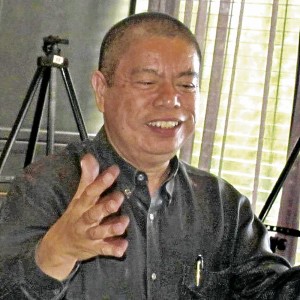Which media will survive?
In the past, when marketers would like to advertise, ad agencies would readily say, “let’s make a TV commercial or a print ad or a radio ad” and that was it.
Media specialists were excluded from the picture from day one of the thought process. They only came in on implementation day.
They, too, were always in the last sequence of every imaginable presentation (brand campaign launches, pitches, reviews, etc). They only hugged the spotlight when ads were already in the can, ready to roll, be seen and heard by audiences.
“If you think that is still the same today, you are in the wrong business,” says Lito “Boy” Pangilinan, organizer and chair of the first MSAP (Media Specialist Association of the Philippines) Media Congress that opened recently.
Pangilinan is also MSAP’s vice president. The congress is his brainchild—a lock, stock and barrel Philippine Ad Congress but single-minded in discussing solutions on the future of advertising media.
Article continues after this advertisementHe is CEO of Carat Philippines, part of Carat Worldwide, the first independent media in the world and under Aegis Media, the world’s largest independent group.
Article continues after this advertisement“The Media Congress seeks to be the answer to the industry’s need for revolutionary media ideas and focused perspectives shared on a frequent cycle,” he tells BusinessFriday.
The Congress is slated to take place every other year, its key function is to update media agencies, clients and suppliers on innovative media and other trends.
Congress’ theme was “Brave New World: Embracing the Media Revolution” unfolded. The program was value-packed with learnings.
The Philippines’ first Media Congress covered talks from leaders in media and high profile clients on the latest trends and best practices in the various touch points: OOH (out-of-home), print, digital and broadcast (radio and television).
Speakers include Bunny Aguilar of Globe Telecom, Donald Lim, managing director of MRM (McCann Relationship Management) Manila, Santi Elizalde of Manila Broadcasting Company and former McCann-Erickson President and Chief Operating Officer Nandy Villar, now ABS-CBN head of Customer Relationship Marketing.
The various forums focused on the noticeable shift in how media was being consumed—how consumers themselves are now having more control and how media agencies are keeping up with these new challenges and demands.
The highlight of the congress was a discussion between heavyweight CEOs of media networks from Asia Pacific: Nick Waters, CEO of Aegis Media, Mark Patterson, CEO of GroupM and Ranganathan Somanathan, COO, Starcom Mediavest Group Southeast Asia.
Is death of traditional media forthcoming?
Every one is talking digital nowadays. As the landscape continues to change, new broadband products emerge, smartphones double their figure usages, and consumer behavior supports the phenomenon, digital becomes a primary highway.
The growth of Philippine online advertising at 26 percent penetration level can be best described as rapid.
The figure is guaranteed to double in a short time, prompting observers to ask: Will Digital cast its death knell on traditional media?
“Anyone in the field of media and communications, such as those in this group, are constantly pressured to “go digital and online,” almost suggesting that a bias for the more traditional media, like television, is a jurassic way of thinking,” Villar says in his “Beyond Television” speech.
Good for a good laugh.”
In his speech, Villar mentioned about the supposed-to-be “death of TV.” On the contrary, he says “TV, that 32” screen in your living room, will be one of the surviving screens in the future.”
Villar notes that as smaller, ‘smarter’ screens are flooding the market, they get cheaper and cheaper to buy and becoming people’s default “screen” than the traditional TV, marketers would naturally get scared.
“But TV is not just about the screen, TV is what you watch. It is the teleserye that made you cry, the sitcom that made you laugh, the bit of gossip that made your jaw drop, the cute ‘artista’ that made you swoon,” Villar says.
He went on to say that today, “TV is accessible in every screen, big or small. The multiscreen phenomenon is not killing TV, it’s even making it more ubiquitous.”
Villar says with “ubiquity comes a bigger appetite for content. Not only do we want more of TV, we want to do more with our TV, we want to interact with it, play with it and be a part of it.”
Largely single-TV households
In the Philippines, Villar says, traditional TV is still prevalent. Majority of people, in fact, still flock to watch their favorite shows.
He cites “Be Careful With My Heart” breaking 30 percent ratings before noontime. “When that happens, you know that TV viewership is alive and well,” he says.
This TV-centeredness of Filipinos, according to Villar, actually helped shape ABS-CBN’s version of “multi-screen” that is largely focused on content.
“It’s the content that people converge around. Powerful content can lead to new and meaningful experiences for the audience,” he emphasizes.
“When a show becomes a “hit,” it is because it has engaged various audiences in various ways. A “hit,” therefore becomes an ideal springboard for alternative executions where the same piece of content is re-engineered to create new experiences, to be enjoyed in new media,” he continues.
Re-engineering television
Villar shares ABS-CBN’s three initiatives in which the network has created new experiences by re-engineering the medium via: Digital Terrestial TV (DTT), Imortal and Iwantv.
“Each of these offers different insights into how content compliments technology in shaping viewer behavior,” he says.
DTT is the digital black box, the platform by which content is transmitted over a digital signal giving significant improvement over the current analog technology.
The result is a clearer signal and better overall viewing experience. It is the evolution of TV toward meeting the needs of the Filipino family.
In many parts of the world, like Japan and Europe, “DTT is already the norm,” Villar says. “We hope that the Filipino audience will soon enjoy the same digital technology—sooner than later,” he says.
Villar also punctuates the further evolution of the medium through the network’s iWantTV, an online video platform that offers free access to video content owned and licensed by the same and its subsidiaries.
He stresses how iWantTV has made TV enjoyment on Filipino audience’s terms.
iWantTV is now the country’s most successful local video site, averaging 18 million page views per month, 1 million unique users per month, with 1.2 million registered users and still growing.
In today’s digital environment, how do we deal with the changes of the TV medium, multi-screen, cord-cutting, and other doomsday scenarios?
Villar concludes: “They shouldn’t cause us to panic. As a matter of fact, we should embrace them, because rather than signal the death of TV, they should actually herald a new age of ubiquity for TV,” he says.

